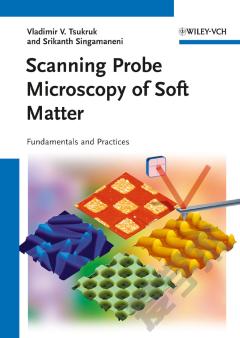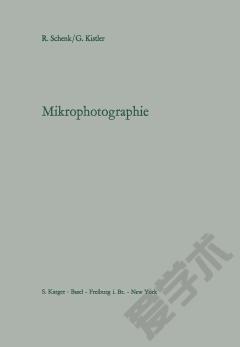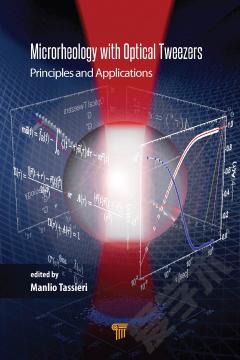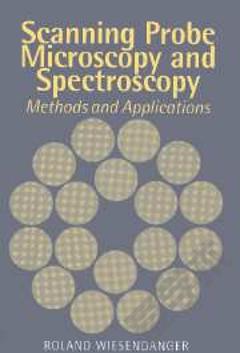Scanning Probe Microscopy of Soft Matter —— Fundamentals and Practices
----- 软物质的扫描探针显微术:基础和实践
PART I: Microscopy Fundamentals INTRODUCTION SCANNING PROBE MICROSCOPY BASICS Basic Principles of Scanning Probe Microscopy Scanning Tunneling Microscopy Advent of Atomic Force Microscopy Overview of Instrumentation Probes and Cantilevers in Scanning Probe Microscopy Modes of Operation Advantages and Limitations BASICS FOR ATOMIC FORCE MICROSCOPY STUDIES OF SOFT MATTER Physical Principles: Forces of Interaction Imaging in Controlled Environment Artifacts in AFM Imaging of Soft Materials Some Suggestions and Hints for Avoiding Artifacts ADVANCED IMAGING MODES Surface Force Spectroscopy Friction Force Microscopy Shear Modulation Force Microscopy Chemical Force Microscopy Pulsed-Force Microscopy Colloidal Probe Microscopy Scanning Thermal Microscopy Kelvin Probe and Electrostatic Force Microscopy Conductive Force Microscopy Magnetic Force Microscopy Scanning Acoustic Force Microscopy High-Speed Scanning Probe Microscopy PART II: Probing Nanoscale Physical and Chemical Properties MECHANICAL PROPERTIES OF POLYMERS AND MACROMOLECULES Elements of Contact Mechanics and Elastic Modulus Probing of Elastic Moduli for Different Materials: Selected Examples Adhesion Measurements Visoelasticity Measurements Friction Unfolding of Macromolecules PROBING OF MICROTHERMAL PROPERTIES Introduction Measurements of Glass Transition Melting, Crystallization, and Liquid Crystalline Phase Transformations Thermal Expansion of Microstructures Surface Thermal Conductivity CHEMICAL AND ELECTRICAL PROPERTIES Chemical Interactions Electrochemical Properties Work Function and Surface Potential Conductivity Magnetic Properties SCANNING PROBE OPTICAL TECHNIQUES Fundamental Principles Introduction to Scanning Near-Field Optical Microscopy Examples of NSOM Studies of Polymers and Polymer Blends Multicolor NSOM Measurements Tip-Enhanced Raman Spectroscopy and Microscopy AFM Tip-Enhanced Fluorescence Integrating AFM with Fluorescence Optical Microscopy Integrating AFM with Confocal Raman Microscopy PART III: Scanning Probe Techniques for Various Soft Materials AMORPHOUS AND POORLY ORDERED POLYMERS Introduction Glassy Amorphous Polymers Rubbers Polymer Gels Interpenetrating Networks ORGANIZED POLYMERIC MATERIALS Crystalline Polymers Liquid Crystalline Polymeric Materials Periodic Polymeric Structures HIGHLY BRANCHED MACROMOLECULES Dendrimers and Dendritic Molecules Brush Molecules Hyperbranched Polymers Star Molecules Highly Branched Nanoparticles MULTICOMPONENT POLYMER SYSTEMS AND FIBERS Polymer Blends Block Copolymers Polymer Nanocomposites Porous Membranes Micro- and Nanofibers ENGINEERED SURFACE AND INTERFACIAL MATERIALS Brush Polymer Layers Self-Assembled Monolayers Adsorbed Macromolecules on Different Substrates LANGMUIR-BLODGETT AND LAYER-BY-LAYER STRUCTURES LbL Films Langmuir-Blodgett Films COLLOIDS AND MICROCAPSULES Colloids and Latexes Thin Shell Microcapsules Replicas and Anisotropic Template Structures Interfacial Interactions Between Particles and Surfaces BIOMATERIALS AND BIOLOGICAL STRUCTURES Imaging Adsorbed Biomacromolecules Probing Specific Biomolecular Interactions Mechanics of Individual Biomacromolecules Single-Cell Elasticity Lipid Bilayers as Cell Membrane Mimics PART IV: Nanomanipulation, Patterning, and Sensing SCANNING PROBE MICROSCOPY ON PRACTICAL DEVICES Electrical SPM of Active Electronic and Optoelectronic Devices Magnetic Force Microscopy of Storage Devices NSOM of Electrooptical Devices and Nanostructures Friction Force Microscopy of Storage Media and MEMS Devices NANOLITHOGRAPHY WITH INTRUSIVE AFM TIP Introduction to AFM Nanolithography Mechanical Nanolithography Local Oxidative Nanolithography Electrostatic Nanolithography Thermomechanical Nanolithography DIP-PEN NANOLITHOGRAPHY Basics of the Ink and Pen Approach Writing with a Single Pen Simultaneous Writing with Multiple Pens and Large-Scale DPN MICROCANTILEVER-BASED SENSORS Basic Modes of Operation Thermal and Vapor Sensing Sensing in Liquid Environment
{{comment.content}}








 京公网安备 11010802027623号
京公网安备 11010802027623号